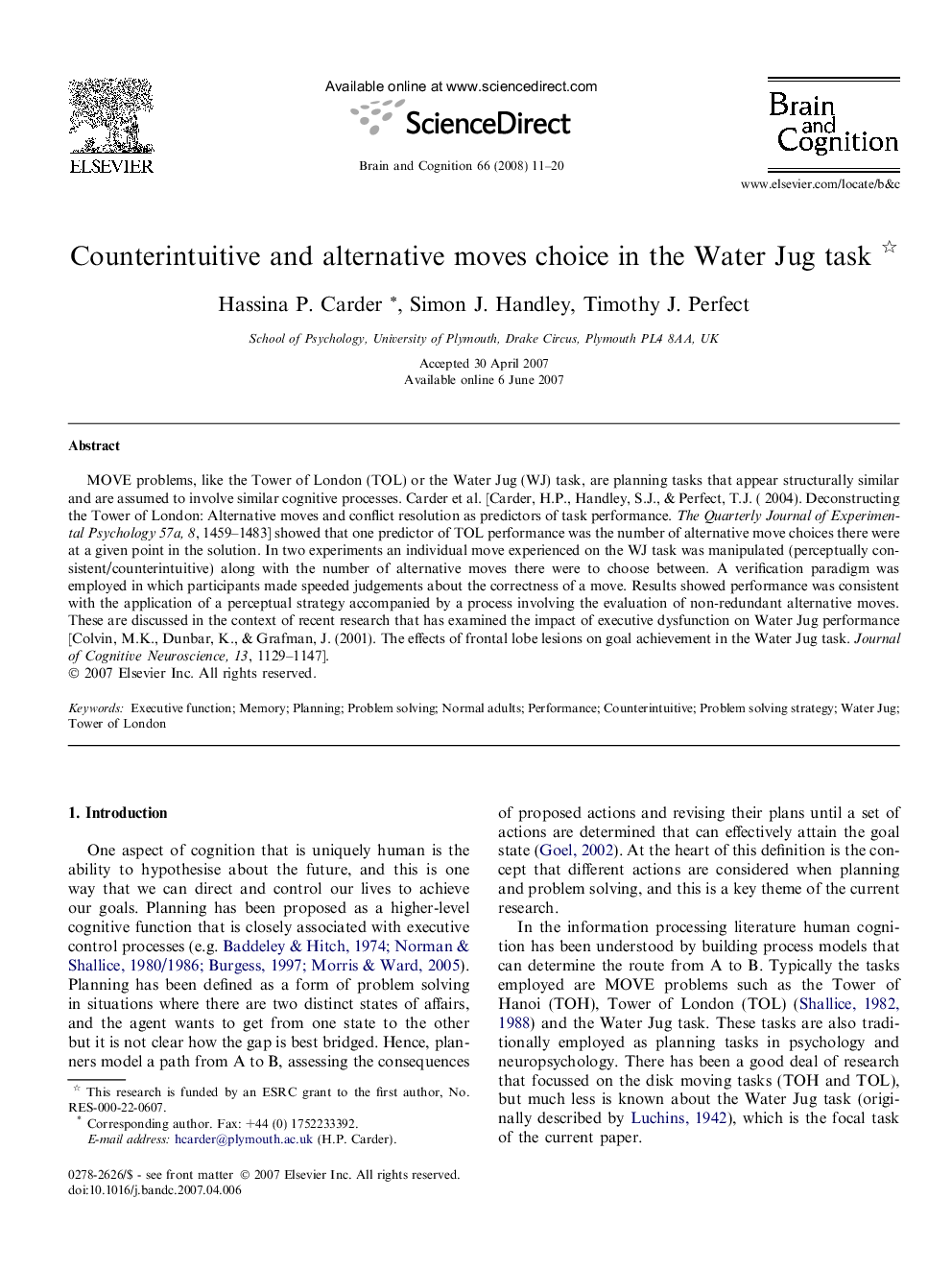| Article ID | Journal | Published Year | Pages | File Type |
|---|---|---|---|---|
| 924357 | Brain and Cognition | 2008 | 10 Pages |
MOVE problems, like the Tower of London (TOL) or the Water Jug (WJ) task, are planning tasks that appear structurally similar and are assumed to involve similar cognitive processes. Carder et al. [Carder, H.P., Handley, S.J., & Perfect, T.J. ( 2004). Deconstructing the Tower of London: Alternative moves and conflict resolution as predictors of task performance. The Quarterly Journal of Experimental Psychology 57a, 8, 1459–1483] showed that one predictor of TOL performance was the number of alternative move choices there were at a given point in the solution. In two experiments an individual move experienced on the WJ task was manipulated (perceptually consistent/counterintuitive) along with the number of alternative moves there were to choose between. A verification paradigm was employed in which participants made speeded judgements about the correctness of a move. Results showed performance was consistent with the application of a perceptual strategy accompanied by a process involving the evaluation of non-redundant alternative moves. These are discussed in the context of recent research that has examined the impact of executive dysfunction on Water Jug performance [Colvin, M.K., Dunbar, K., & Grafman, J. (2001). The effects of frontal lobe lesions on goal achievement in the Water Jug task. Journal of Cognitive Neuroscience, 13, 1129–1147].
